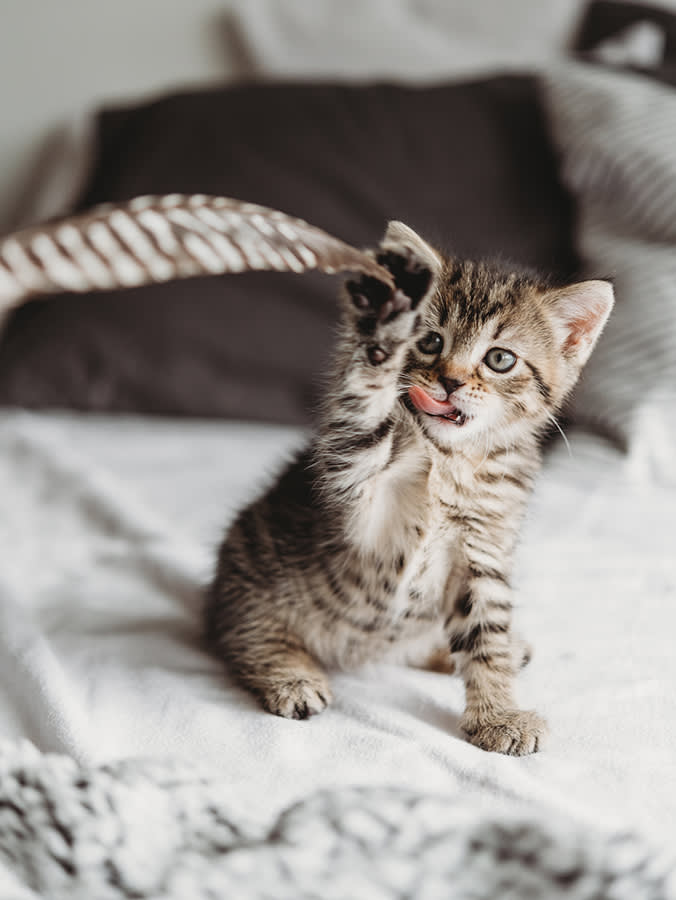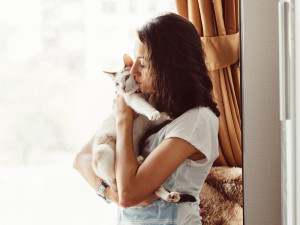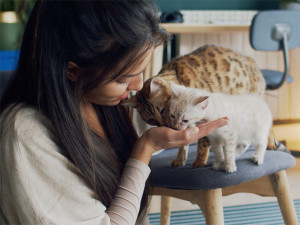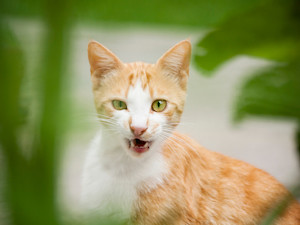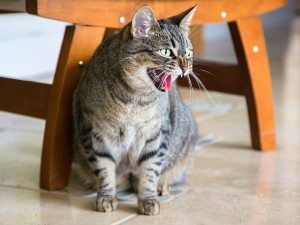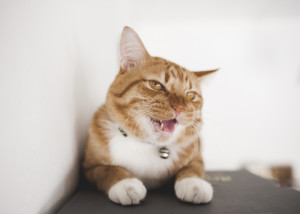How to Know if Your Cat is a Righty or a Lefty
A cat’s paw preference can give you insight into their temperament, behavior, and emotions.
Eyes may be the windows to the soul, but cat paws are the doorway to the brain. It’s true — observing which paw your cat prefers to use offers insight into their minds. Finding new ways to decipher your cat’s behavior is just as exciting as cardboard boxes, catnip, and a glorious nap in the sun, so let’s get into it.
The Connection of Paw Preference to Emotions and Behavior
The scientific term for paw preference (and otherwise preferentially using one side of the body) is lateralization, and it wasn’t long ago it was assumed to be a uniquely human trait. Now, we know the phenomenon occurs in dogs, cats, dolphins, mice, monkeys, parrots, songbirds, toads, and fish, among other animals.
Save on the litter with color-changing tech that helps you better care for your cat.
Lateralization may seem trivial. Does it really matter if your cat bats at toys or reaches under the couch for a treat with their right paw or their left paw? But paw preference is linked to differences in temperament, behavior, and emotion.
A cat’s paw preference reveals which side of their is more active. The right and left hemispheres of the brain process different emotions and responses to different types of experiences and stimuli, so the side of the brain that is more active is a key part of who a cat is. The left side of the brain is involved in well-established, familiar, non-stressful behavior. It also processes positive emotions, such as happiness and excitement. In contrast, the right side of the brain is more responsive to anything unfamiliar, as well as to emergency situations and the need to escape from them. It also processes negative emotions, such as sadness and fear.
How much do you spend on your pet per year?
Cats Show More Variety in Paw Preference Than People
Cats are just like people in that the right side of the body is controlled by the left side of the brain and the left side of the body is controlled by the right side of the brain. So, the joke that “only left-handed people are in their right minds” applies to cats, too. (The problems that lefties have with spiral notebooks, smearing what they have just written, and scissors are uniquely human.)
Around 90 percent of people favor the right hand, but cats are more variable. Paw preference in cats shows close to an even split — roughly a third of cats are left-pawed, a third are right-pawed, and cats with no preference make up the final third. Female cats are more likely to be right-pawed, and males are more likely to be left-pawed. Left-pawed cats are more likely to be fearful and more likely to be aggressive. Right-pawed cats are more playful than left-pawed cats and cats with no paw preference.
Preferences — Strong, Weak, and Non-Existent
Even the strength of a cat’s paw preference is meaningful. Variable strength of a preference for one limb over the other is seen in many species, including humans. (Some people can do quite a lot with their non-dominant hand, while others report that their left arm, for example, is more or less just along for the ride.) In cats, stronger paw preference is linked with being more confident, affectionate, obedient, and friendly. Cats who demonstrate a paw preference, whether it’s for their right or their left paw, are generally more dexterous in physical tasks, better problem solvers, and have faster reaction times.
The technical term for cats (and other animals) with no paw preference is “ambilateral” though we use the similar word “ambidextrous” when referring to humans who use both their hands equally. Ambilateral cats are more likely to be vulnerable to stress, which is much like what we see in people — the ambidextrous among us are more susceptible to PTSD and more likely to struggle with high levels of anxiety. Ambilateral cats are more likely to be aggressive than left or right-pawed cats.
Is Your Cat a Southpaw?
You can determine if your cat has a paw preference the same way scientists do. They watch to see which paw a cat uses to take their first step into the litter box and which paw they use for the first step down a flight of stairs. They put treats in a container and observe which paw the cat uses to try to get them out. For any of these tests, you need to repeat this 50 times to determine whether a cat has a consistent preference for using one paw over the other in that setting, and if so, how strong the preference.
Whether a cat is right-pawed or left-pawed or has no paw preference at all provides clues to all kinds of things about that cat. Studying lateralization is yet another way to learn about the cats who live in our homes and in our hearts.
